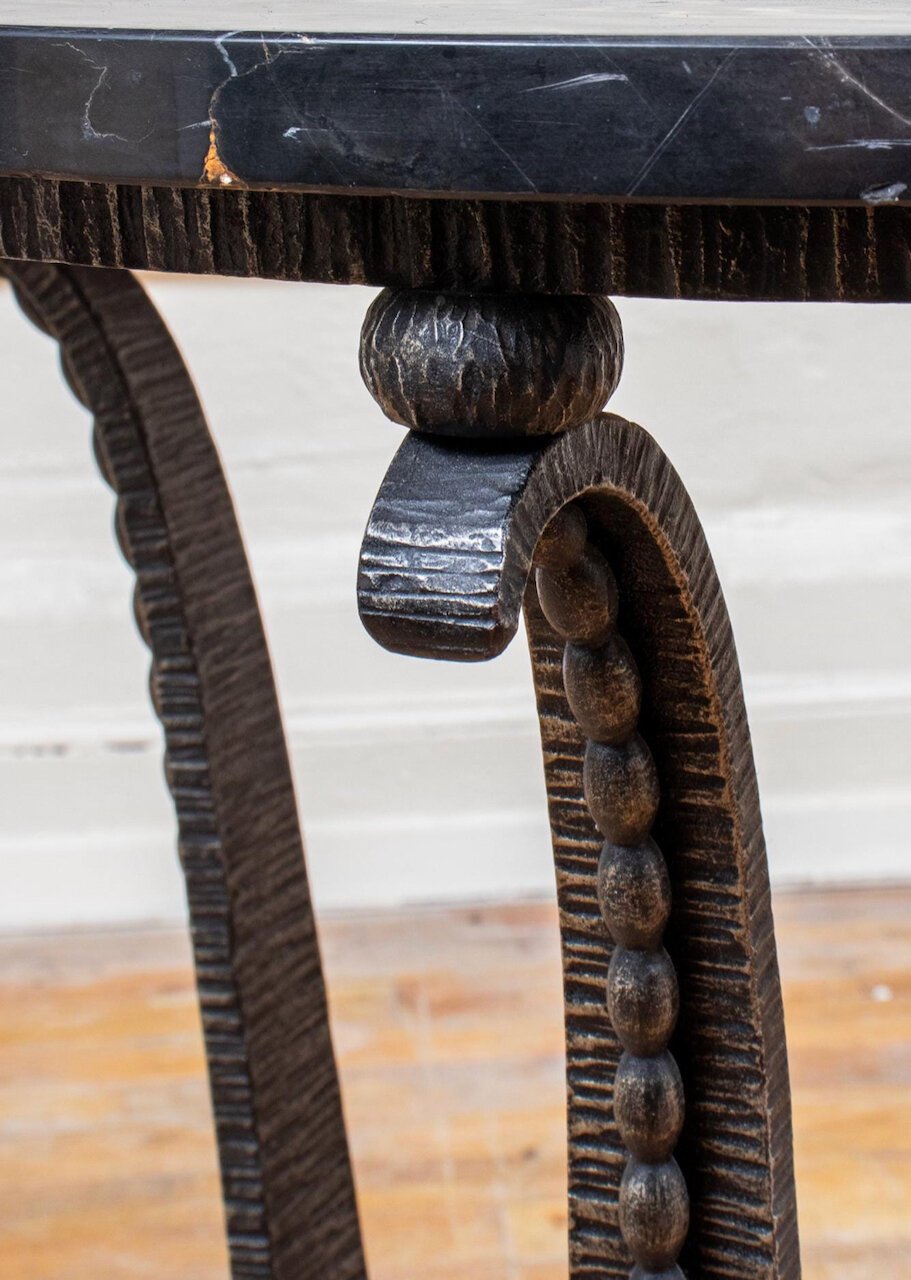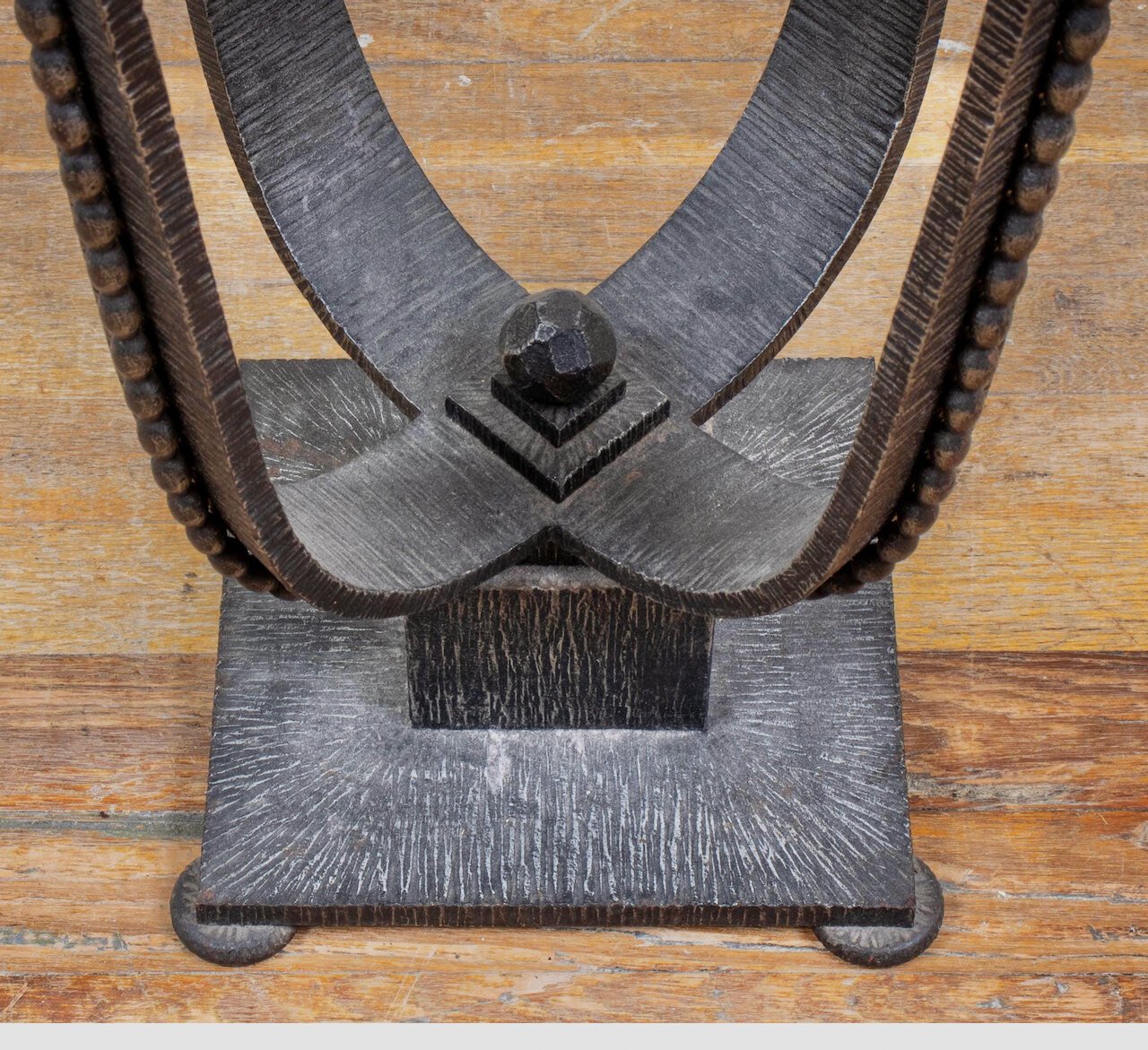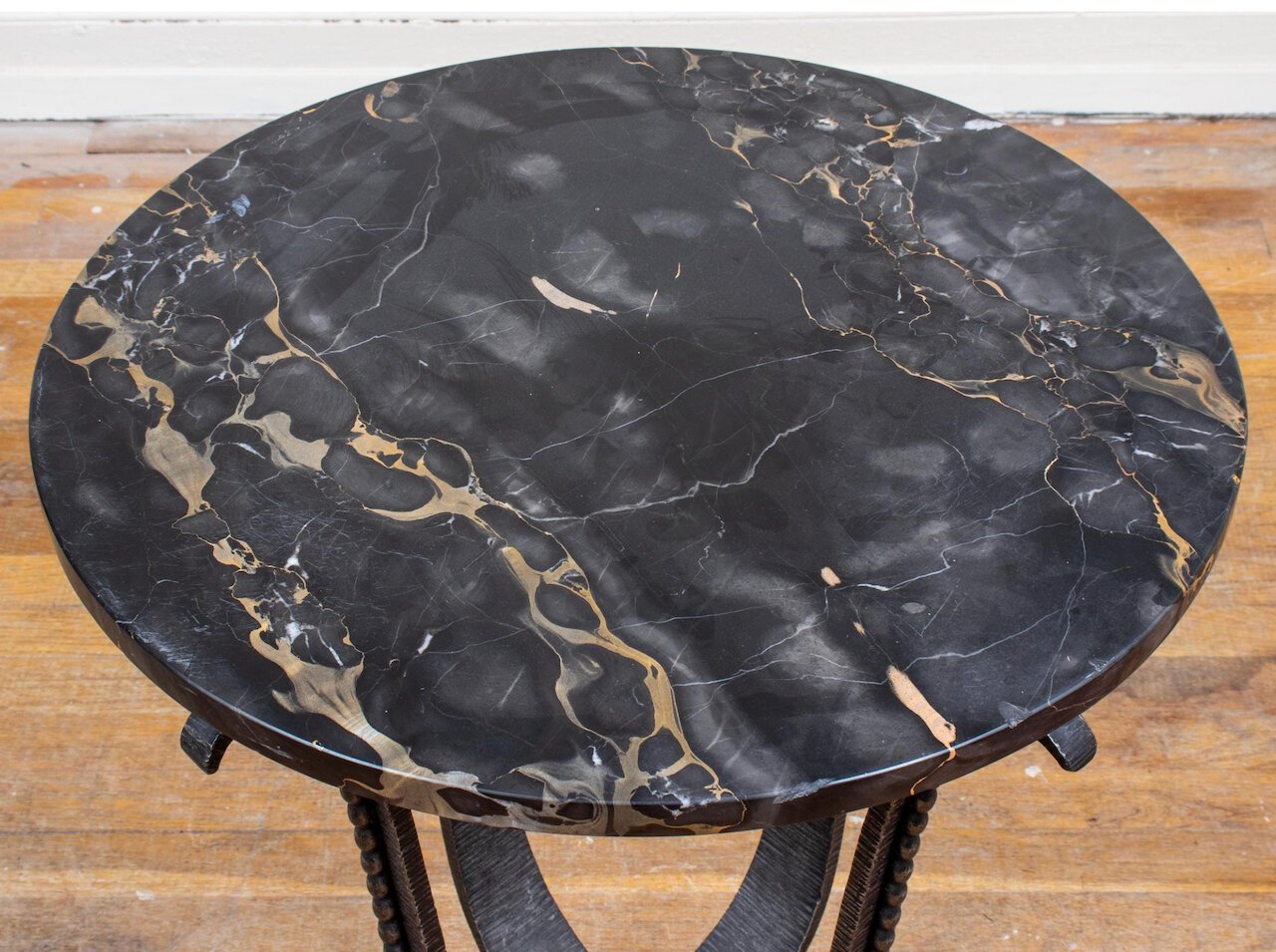 Image 1 of 4
Image 1 of 4

 Image 2 of 4
Image 2 of 4

 Image 3 of 4
Image 3 of 4

 Image 4 of 4
Image 4 of 4





Edgar Brandt forged iron side/end table (#1667)
Classic French Art Deco side table by Edgar Brandt, circa 1920, in forged iron with marble top. 23” diameter x 26” high.
EDGAR BRANDT
(1880-1960)
Edgar Brandt was born in Paris on Christmas Eve in 1880. He attended Vierzon, a school which had two studios – one for woodworking and the other on ironworking. He chose iron and by age 15 he was the most accomplished ironsmith in the school. He mastered mathematics and technology which raised the sophistication of his work.
He began showing his work at the Salons of Societe des Artistes Francais in 1900. In 1903, the exhibition exposed him to many other great artists of the time including Louis Majorelle, the famous Art Nouveau designer. Majorelle had included several pieces of furniture with wrought iron decoration in his exhibit – and this may have influenced Brandt to begin experimenting with his own ironwork designs on cabinetry.
From around 1905 into the 1930s he collaborated with the fine glassworks, Daum, to create lighting fixtures incorporating art glass with bronze.
Brandt participated also in the Salon des Beaux-Arts 1900-1914, The Societe des Artistes Decorateurs and the Salon d’Automne, and most of the international exhibitions, winning numerous awards. He also participated in the design and construction of many World War I monuments. He designed the French Tomb of the Unkown Soldier at the Arc de Triomphe, Paris, and the Armistice Monument in Rethondes. This work expanded his experiences to include doors, panels, railings, windows and chandeliers.
In 1919 he opened his own workshop on the site of his father’s old ironworks. He installed the newest equipment and a showroom designed by Henri Favier, called La Maison d’unFerronnier. In 1926 he moved his offices, gallery and atelier to Paris. He designed residential, office, public (embassies) and oceanliner interiors and in 1925 opened a branch of his iron business in New York, called Ferrobrandt.
The Paris Exposition in 1925, where his work was an essential part of many exhibits, earned him an international reputation. His “l’Oasis” – a six-fold screen made of copper and brass, was one of the most influential pieces of Art Deco ironwork ever produced.
He was awarded the title of Knight of the Legion of Honor, and received the Medal of Honor for Applied Art by the Societe des Artistes Francais. Brandt died in Geneva in 1960.
Classic French Art Deco side table by Edgar Brandt, circa 1920, in forged iron with marble top. 23” diameter x 26” high.
EDGAR BRANDT
(1880-1960)
Edgar Brandt was born in Paris on Christmas Eve in 1880. He attended Vierzon, a school which had two studios – one for woodworking and the other on ironworking. He chose iron and by age 15 he was the most accomplished ironsmith in the school. He mastered mathematics and technology which raised the sophistication of his work.
He began showing his work at the Salons of Societe des Artistes Francais in 1900. In 1903, the exhibition exposed him to many other great artists of the time including Louis Majorelle, the famous Art Nouveau designer. Majorelle had included several pieces of furniture with wrought iron decoration in his exhibit – and this may have influenced Brandt to begin experimenting with his own ironwork designs on cabinetry.
From around 1905 into the 1930s he collaborated with the fine glassworks, Daum, to create lighting fixtures incorporating art glass with bronze.
Brandt participated also in the Salon des Beaux-Arts 1900-1914, The Societe des Artistes Decorateurs and the Salon d’Automne, and most of the international exhibitions, winning numerous awards. He also participated in the design and construction of many World War I monuments. He designed the French Tomb of the Unkown Soldier at the Arc de Triomphe, Paris, and the Armistice Monument in Rethondes. This work expanded his experiences to include doors, panels, railings, windows and chandeliers.
In 1919 he opened his own workshop on the site of his father’s old ironworks. He installed the newest equipment and a showroom designed by Henri Favier, called La Maison d’unFerronnier. In 1926 he moved his offices, gallery and atelier to Paris. He designed residential, office, public (embassies) and oceanliner interiors and in 1925 opened a branch of his iron business in New York, called Ferrobrandt.
The Paris Exposition in 1925, where his work was an essential part of many exhibits, earned him an international reputation. His “l’Oasis” – a six-fold screen made of copper and brass, was one of the most influential pieces of Art Deco ironwork ever produced.
He was awarded the title of Knight of the Legion of Honor, and received the Medal of Honor for Applied Art by the Societe des Artistes Francais. Brandt died in Geneva in 1960.
